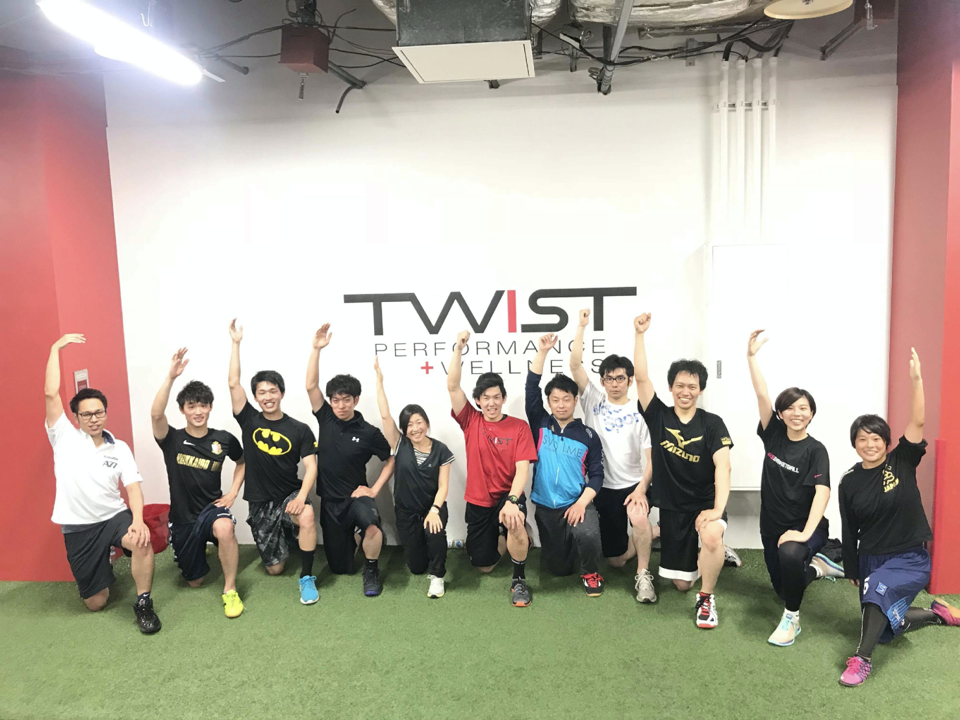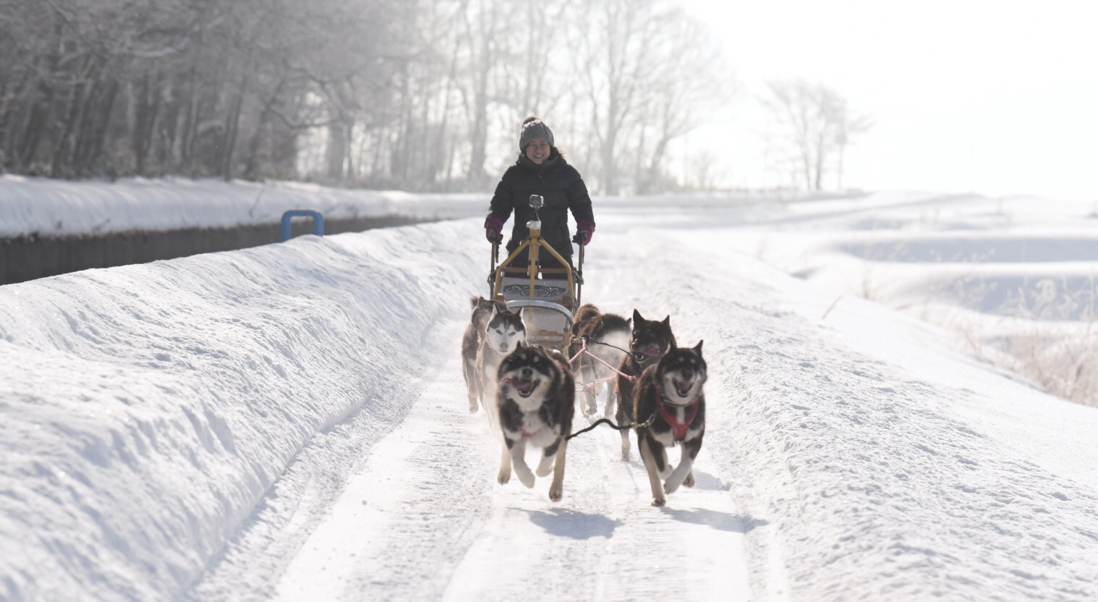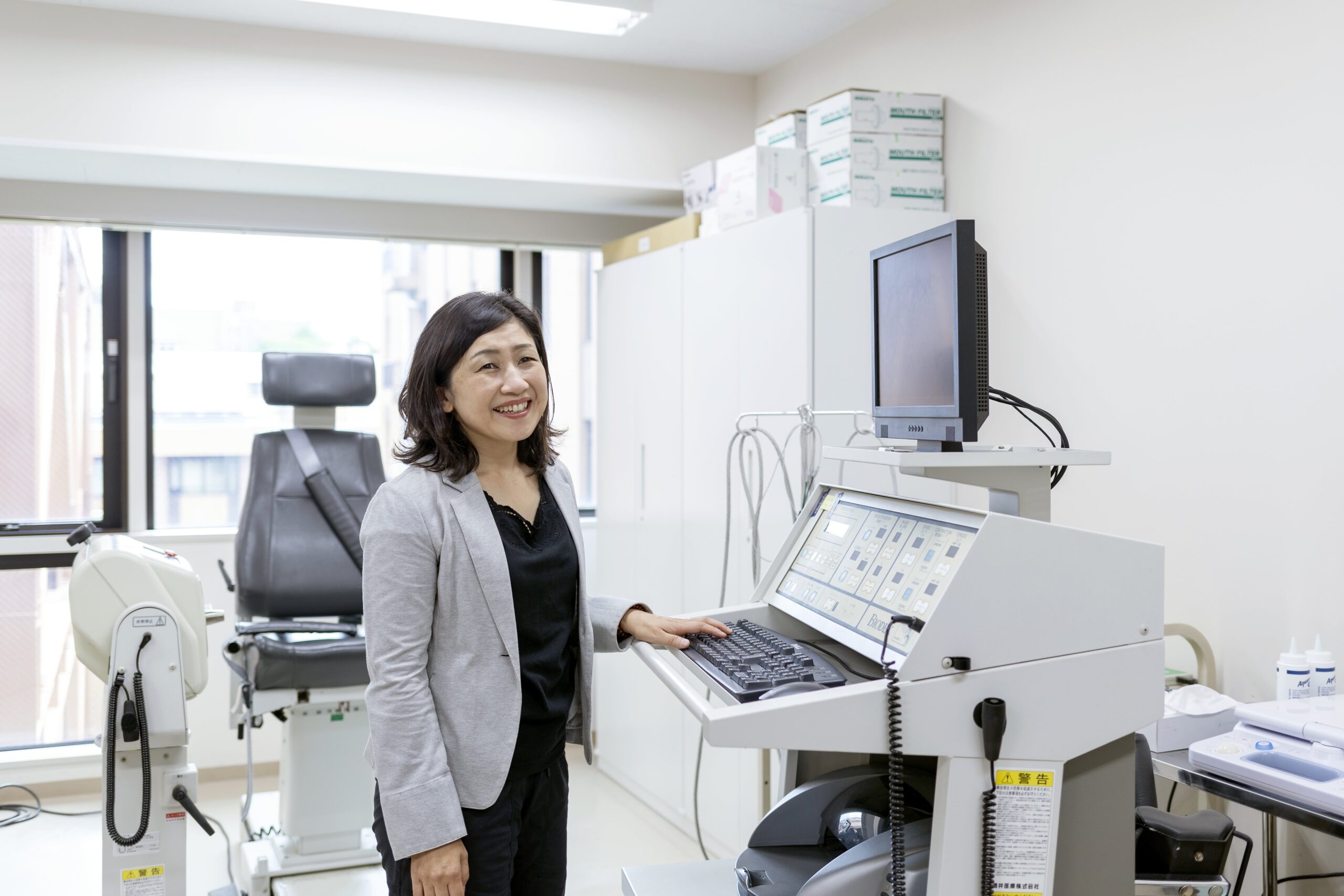Sports physical therapy science—the pursuit of safe, efficient exercise
University News | January 26, 2022
This article was published in the Autumn 2021 issue of Litterae Populi. The full issue can be found here.
A doctor of physical therapy, Associate Professor Mina Samukawa specializes in sports physical therapy science and exercise therapy science. After graduating from the School of Allied Health Professions, Sapporo Medical College, she worked at an orthopedic hospital in Sapporo and then pursued her studies at the University of Alberta in Canada. She then received a doctorate from the Graduate School of Health Sciences, Sapporo Medical University. In 2003, she became an assistant at the Junior College of Medical Technology, Hokkaido University. In 2008, she changed her affiliation to the Faculty of Health Sciences and has served as an associate professor there since 2013. She is a researcher who is playing an active role at the forefront of sports, as exemplified by her involvement as a core physical therapist during the Tokyo 2020 Olympic Games.
Various experiences leading her to pursue a career in professional physical therapy
The motor function disability from illness, injury, or advanced age, or aging make it difficult for one to move and thus to perform everyday tasks. People who are in such a condition or who are likely to be in it need treatment (rehabilitation) aimed at restoring the basic motor functions ability for independent daily living (e.g., walking, sitting, standing). Such treatment is called physical therapy. Experts who help restore and maintain motor functions by physical therapy are called physical therapists. Physical therapy is roughly divided into three types: (1) exercise therapy, treatment in which the physical therapist helps patients who require rehabilitation to move their body by hand or with an instrument, or in which the patients themselves move their body; (2) physical therapy, treatment in which physical stimulation (e.g., warming and vibrating the affected area) is given to patients requiring rehabilitation; and (3) orthotic treatment using tape and other orthotic devices.
Associate Professor Mina Samukawa at the Faculty of Health Sciences is engaged in research based on exercise therapy to prevent sports injuries, verify the effectiveness of exercise therapy, and promote health, particularly women’s health. Associate Professor Samukawa was born in Otaru City and has enjoyed alpine skiing since childhood. She entered Hokkaido Otaru Chouryou High School and joined the ski club there. The club, however, had only two members, her and a ski jumper, prompting her to practice with members of a strong team in the city. “In those days, there were often cases in which the athletes I practiced and competed with injured themselves, and those who suffered torn ligaments in their knees had to give up on competing,” says Dr. Samukawa. “It made me wonder, vaguely, whether there might be a career in helping to treat and prevent sports injuries, inspiring me to pursue a career in physical therapy.”

Associate Professor Samukawa with her seminar students in the Sports Physical Therapy Laboratory. She works out with them at a gym to experience the effectiveness and significance of exercises researched by the students.
After entering the Department of Physical Therapy of the School of Allied Health Professions, Sapporo Medical University, she wanted to study in a country where she could learn advanced sports physical therapy. But her supervisor at that time advised her to gain clinical experience in Japan first, resulting in her decision to work as a physical therapist at an orthopedic clinic in Sapporo. She looks back on those days and comments, “I had abundant opportunities to examine top-level athletes in ski jumping, soccer, and other sports. This valuable experience gave me a clear image of the rehabilitation techniques I should strive to master, motivating me to learn sports physical therapy outside Japan. Thanks to a reference from my mentor in university, I pursued my studies at the University of Alberta in Canada.”
Striving to develop a method for preventing sports injuries that takes into consideration the characteristics of competitions
After returning to Japan, Dr. Samukawa engaged in research at Sapporo Medical University’s graduate school and then joined the faculty of Hokkaido University in 2003. Today, she undertakes research in the Sports Physical Therapy Laboratory to address challenges in competitive sports, such as injury prevention through the elucidation of factors causing injury. She also works to contribute to the community, by helping the citizenry of lwamizawa City promote their health through exercise as a member of the Health-Centered Community Project at Hokkaido University’s “Innovative Food and Healthcare Master” Center of lnnovation (COI).
Dr. Samukawa has been active in various fields. As a physical therapist for the Ski Association of Japan, she has engaged in injury prevention and treatment during competitions, accompanying the Japanese national mogul ski team to competitions including the World Cup, the World Championships and the Olympic Games. She was also among the core staff of the physical therapy division at the Tokyo 2020 Olympic Village, providing support to athletes from Japan and around the world. She fosters human resources necessary for the development of the science of sports physical therapy-a relatively new discipline in Japan-by passing on the knowledge she gains from these experiences to her students. Speaking of her determination going forward, Dr. Samukawa notes, “I hope my seminar students will think outside the box as they dedicate themselves to their studies. I hope we will publish research findings that act as a bridge between sports and clinical fields.” She devotes herself to research each day with her students, in order to develop a method for preventing sports injuries that takes into consideration the characteristics of competitions, based on her various experiences at sports competitions.

Family time amidst nature. In her childhood, Associate Professor Samukawa enjoyed swimming on the coast of Otaru and skiing in the mountains. Even today, spending time with her family amidst nature makes for a pleasant change of pace. This photo shows her dog-sledding in Takasu Town in Hokkaido.
This article was published in the Autumn 2021 issue of Litterae Populi. The full issue can be found here.

